 January 7, 2016 John E. Ross, KD8IDJ, Editor
| ||||||||||
ARRL Board of Directors to Elect New President, Officers at January Meeting The ARRL Board of Directors' annual meeting in mid-January will mark the start of a changing of the guard at the League. After serving three 2-year terms, ARRL President Kay Craigie, N3KN, of Blacksburg, Virginia, is stepping aside, and the Board will choose her successor -- and the League's 16th president -- when it convenes on January 15. The Board also will elect other officers, as well as vice presidents, Executive Committee members, and ARRL Foundation directors.
A former college instructor, Craigie was licensed in 1983. She served previously as ARRL Section Manager for Eastern Pennsylvania, Atlantic Division Vice Director and Director, and ARRL First Vice President. As President, Craigie presided during the League's Centennial and transition into its second century. The annual meeting also will be the last for ARRL Chief Executive Officer David Sumner, K1ZZ, and for ARRL Chief Operating Officer Harold Kramer, WJ1B. Both will retire this year. Kramer will depart at the end of February. Sumner has targeted May 1 as his last day, and he plans to work with the new CEO to ensure a smooth transition. During the annual meeting, the Board will receive the report of the CEO Search Committee, which is expected to include a recommendation for Sumner's successor. The Board initiated its CEO search last July. The COO position will remain vacant until the new CEO is in place.
By the time he steps down, Sumner will have been on the ARRL Headquarters full-time staff for 44 years. He was named Secretary and General Manager in 1982, with a change in title to Executive Vice President in 1985, and the additional title of Chief Executive Officer in 2001 (the title of Executive Vice President was phased out in 2011). The Board of Directors will also receive the report of the Strategic Planning Working Group, which has been working on a revised Strategic Plan to guide the League in the coming years. In addition, the Administration & Finance Committee will ask the Board to ratify the operational budget plan for 2016-17. The ARRL Board of Directors' annual meeting will take place Friday and Saturday, January 15 and 16, in Windsor, Connecticut. National Parks on the Air (NPOTA) Event Gets Off to a Strong Start! ARRL's National Parks on the Air (NPOTA) year-long event got off to a strong start on New Year's Day, with considerable activity reported on the HF bands and even some on the SO-50 satellite over the first weekend of the new year. Throughout 2016, Amateur Radio will be helping the National Park Service (NPS) to celebrate its 100th anniversary. Hams will activate NPS units, promote the Park Service, and showcase Amateur Radio to the public. During the first 3 days of NPOTA, "Activators" were on the air from 78 of the 483 NPOTA Units.
The program has two participation tracks -- Chasers and Activators. Chasers will simply attempt to make contact with operators in as many of the NPS units as possible. NPOTA participants may serve in both roles. Chaser and Activator totals will be tracked via an online NPOTA Leader Board based on LoTW data. "We've received an official welcome from the NPS superintendent of the North Country National Scenic Trail and the Executive Director of the North Country Trail Association," Kutzko reported. The trail runs from New York to North Dakota.
"We appreciate your enthusiasm and engagement as we celebrate this 100th anniversary of the National Park Service," wrote Mark Weaver, the Scenic Trail superintendent, and Bruce Matthews, executive director of the North Country Trail Association. "While operating from the North Country National Scenic Trail, we encourage all radio amateurs to participate in the NCTAs Hike 100 Challenge, to hike 100 miles on the trail this year; to get out, enjoy the fresh air, get some exercise, and take a moment to appreciate one of America's great scenic and recreational resources." Kutzko said 400 new NPOTA Facebook group members have signed on since New Year's Eve. "The Facebook group is the central location for all things NPOTA," he said. "It has lots of people exchanging ideas, tips, spots, and success stories. We're also using it as the place to keep everybody updated on administrative issues." #ARRL_NPOTA, #NPS100, and #HamRadioInParks remain the common Twitter feeds. Read more. ARRL Again Complains to FCC about Illegal Marketing of Electronic Lighting Ballasts The ARRL has again complained to the FCC to allege illegal marketing of electronic RF lighting ballasts, operating under Part 18 of the Commission's rules, on the part of two major retailers. Letters went out in late December to the FCC Enforcement Bureau and its Office of Engineering and Technology, claiming Part 18 marketing regulations violations by Lowe's and by Walmart stores. At issue is the sale of non-consumer RF lighting ballasts to consumers who, in several instances, were told by store personnel that it was okay to install these in a residential setting. "ARRL purports to show that the [retailer] is...marketing and selling to consumers (by retail sale) non-consumer Part 18 RF lighting devices which are not intended for residential deployment, to consumers who have specifically noted their intention to deploy the devices in residential applications," ARRL Chief Counsel Chris Imlay, W3KD, said in similar complaint letters to the Commission. Part 18 emissions limits for consumer devices are far lower than those allowed for non-consumer devices.
"ARRL has received numerous complaints from Amateur Radio operators of significant noise in the medium (MF) and high frequency (HF) bands between 1.8 MHz and 30 MHz from 'grow lights' and other Part 15 and part 18 RF lighting devices," Imlay continued. "These devices are easily capable of emitting RF noise sufficient to preclude Amateur Radio MF and HF communications (and, as well, AM broadcast station reception) throughout entire communities." Supporting both complaints were extensive and detailed reports by ARRL Laboratory EMC Specialist Mike Gruber, W1MG. The reports recount incidents of actual purchases of Part 18 RF lighting devices intended for commercial use to consumers who made clear to store personnel that they intended to use the devices at home. Gruber's reports include multiple photographs depicting in-store displays of the products in question and showing signage that does not adequately explain which devices may be sold to whom. The ARRL has asked that stores remove all non-consumer devices from retail sale and marketing and to track and recall non-consumer devices already sold to consumers. Read more. Redesigned FCC Website Makes it Easy for Hams to File Interference Complaints The FCC has made it easier for hams to file RF interference and other complaints, thanks to a new feature of the FCC's recently redesigned website. The addition was made at ARRL's request. Hams have always been able to file such complaints, but when a new complaint system geared largely to consumers came online a year ago, they lost the ability to do so via e-mail to a dedicated address. The change made it less clear how amateurs should file such complaints and what, if anything, would result.
Once on the FCC site, click "File a Consumer Complaint" on the right side of the screen. The next page lists several categories. Under "Radio," click on "File Complaint." This will take you to a web form that you can fill out. The form includes a drop-down menu for the "Radio Issues" field. Pick one, such as "Interference." This will bring down another menu. The "Your Radio Method" field includes another drop-down menu. Select "Amateur Radio." Complete the rest of the form. It is possible to add attachments. Click on "Submit" to file your complaint. The FCC e-mail addresses for submitting complaints have been discontinued; they had been rendered ineffective by spam. Each complaint is assigned a ticket number, and complainants receive an e-mail acknowledgment and, if appropriate, a follow-up report on what was done to address the complaint. Many complaints are simply acknowledged, however, and the complainant is told that it will be used for statistical analysis. A complainant can update a complaint with additional information. "Official" P5/3Z9DX North Korea Activation Now Set for this Summer Following an unexpected "demonstration" operation from North Korea -- officially the Democratic People's Republic of Korea (DPRK) -- just before Christmas, Polish DXer Dom Grzyb, 3Z9DX, now expects to be back in the DPRK -- the most-wanted DXCC entity -- for his "official" activation by late this summer, according to The Daily DX. He initially had anticipated returning this month or next.
P5/3Z9DX showed up on the air from the most-wanted DXCC entity on December 20 and 21 to demonstrate Amateur Radio for North Korean officials. Over the course of that activation -- the first in more than a decade -- P5/3Z9DX made nearly 785 SSB contacts, most of them on 15 meters. Nearly 600 of the contacts were with stations in Asia; P5/3Z9DX worked just 26 stations in North America. He has posted his log on ClubLog. Grzyb recently contacted The Daily DX Editor Bernie McClenny, W3UR, to update his situation. During his visit, authorities were friendly and polite, McClenny reported, noting that he was also surprised that they allowed him to operate in December. P5/3Z9DX was severely hampered by extremely high noise levels on all HF bands, not to mention a geomagnetic storm. Noise, he said in a video posted on his website, made it "almost impossible" to copy weaker signals in Pyongyang.
When he goes back to the DPRK this summer, he will be operating from a far quieter location in a rural area, Grzyb told The Daily DX. While operating from North Korea in December, P5/3Z9DX was running 100 W to a vertical antenna mounted on a metal fence post some 7 feet above the ground among government high-rise buildings. His equipment was left behind in Pyongyang, as was agreed to before his December visit. The P5/3Z9DX preview was the first activation from North Korea since the 2001-2002 operation by Ed Giorgadze, 4L4FN. -- Thanks to OPDX, The Daily DX Palmyra, South Sandwich/South Georgia Will Help Kick Off 2016 DXpedition Calendar Let the 2016 pileups begin! Two major January DXpeditions will be among other smaller efforts, with all aimed at providing a new one to the madding crowd. Look for the Palmyra Island and South Georgia Island/South Sandwich Islands activations, starting around mid-month.
The Group notes that another Palmyra Atoll activation may not take place for many years, because access is severely restricted and permission is difficult to obtain. The team said that without the cooperation and support of the Nature Conservancy and the US Fish and Wildlife Service, the DXpedition would not be possible. The DXpedition's co-leaders are Craig Thompson, K9CT, and Lou Dietrich, N2TU.
"Our plans have us activating South Sandwich Island first, as it is the #3 most-wanted DXCC [entity] in ClubLog," the group said on its website. "We will be active on South Sandwich for 8 full days, weather and sea conditions permitting. We expect to start our activation of VP8STI on January 17." South Georgia is the 8th most-wanted DXCC entity, according to the ClubLog Most Wanted DXCC List. The DXpedition's website describes the South Sandwich Islands as "a cold and inhospitable place," and Southern Thule Island, where the group will operate, as "one of the most remote places on Earth." Read more. ARRL Education and Technology Program Announces School Grants The ARRL Executive Committee has voted unanimously to approve ARRL Education & Technology Program (ETP) grant awards for equipment and other resources to seven schools for the 2015-2016 academic year. They are Akron STEM High School, Akron, Ohio; Liberal Arts & Science Academy High School, Austin, Texas; Life Christian School, Aloha, Oregon; Rock Canyon High School, Highland Ranch, Colorado; Southport Elementary School, Kenosha, Wisconsin; Wink High School, Wink, Texas, and Yucaipa High School, Yucaipa, California.
A primary goal of the ETP is to enhance wireless technology literacy among teachers and students in the US, using Amateur Radio to explore radio science and electronics and provide hands-on activities that stress math, science, engineering, and technology (STEM) topics as well as other core curriculum areas, such as geography and language arts. As of this month, 579 schools have received support from the ETP in the form of equipment and resource grants. The ETP accepts applications for equipment and resource grants each year. The next application deadline is November 1. More information on applying for a grant is on the ARRL website. Dishtronix Purchases TEN-TEC Assets Dishtronix, an electronics design and manufacturing company, has purchased the assets of Amateur Radio equipment manufacturer TEN-TEC from RKR Designs. Headquartered in Bellefontaine, Ohio, Dishtronix manufactures and markets the "Prometheus" solid-state Amateur Radio amplifier, among other products. No formal announcement has been made by either company, and details of the purchase are still being finalized. RKR Designs announced last April 2 that it had acquired the assets of TEN-TEC and Alpha Amplifiers from RF Concepts, less than 1 year after the two lines had merged under the RF Concepts brand in an asset sale. Dishtronix owner Steven M. "Mike" Dishop, N8WFF, told ARRL that, while TEN-TEC has had different owners over the years, he is in it for the long haul.
According to its website, Dishtronix was incorporated in 1998 to design, develop and manufacture electronic controls and products, serving smaller manufacturers that lack electronic design expertise. Dishtronix said that it "seriously committed" in September 2001 to enter the Amateur Radio market with high-power, solid-state amplifiers and accessories. Dishop said Dishtronix has other new products under development, including a new legal-limit, solid-state amp that he expects to debut at Dayton Hamvention® in May. "When I have capacity, the next step is to run the first batch of Omni VII+ [transceivers], which is the Omni VII with some minor cosmetic changes and improvements, such as a flat metal front for improved shielding," he added. He also expects to post some firmware updates as soon as possible, once the new TEN-TEC website is up.
Dishop asked the Amateur Radio community to be patient during the transition. "I am fully committed to bring TEN-TEC back to a sustainable state," he said in his earlier web post. "This will take some time." Read more. CQ World Wide Participants Favor Limiting Operating Time to Less Than 48 Hours According to Part 2 of the 2015 CQ World Wide Contests survey results, contesters want to see a time-limited category for single operators. In September, the CQ WW Contest Committee surveyed everyone who had submitted a log in the 2014 CQ WW SSB and CW events, and issued a public invitation on the cq-contest e-mail reflector. CQ WW Contest Director Randy Thompson, K5ZD, said the committee received 5117 responses from contest operators around the world to Part 2 of the survey, which addressed possible rule changes. A vast majority of respondents answered "yes" to the question, "Do you support limiting the operating time of single operator entrants to less than 48 hours?" Currently, single operators may operate for the entire 48-hour contest period.
According to the survey, 2775 respondents answered "yes," and 1638 said "no," while 694 offered no opinion. A review of CQ World Wide entries for 2015 showed that approximately 90 percent of SSB operators stay in the chair for fewer than 30 hours, while some 90 percent of CW entrants operate fewer than 35 hours. The survey results also suggested that a plurality -- nearly one-half -- of contesters responding would prefer to maintain the separate Single Operator and Single Operator Assisted categories, rather than combining them into one entry category. Commemorative EME Transmission Set from Refurbished Dish on "Project Diana" Site Radio amateurs will attempt a 23 centimeter Earth-Moon-Earth (EME, or "moonbounce") transmission on January 10, using the 60-foot-diameter TLM-18 dish on the former "Project Diana" site, now part of the InfoAge Science History Museum in New Jersey. This month's event marks the 70th anniversary of Project Diana. It was on the InfoAge site, then a part of Fort Monmouth, that the US Army's Project Diana team on January 10, 1946, first received radio signals bounced from the moon.
During the anniversary event, the TLM-18 reactivation team, consisting of volunteers from the museum, the Ocean Monmouth Amateur Radio Club (OMARC), and Princeton University, will transmit from the TLM-18 control console in Building 9162, the original TIROS control building, adjacent to Building 9116, which houses N2MO, the OMARC club station. The dish offers 35 dBi gain at 465 MHz. The former US Army tracking dish was used as a ground station for the TIROS I and II weather satellites and for Project Vanguard, which led to the launch of Vanguard 1, the second US satellite, in 1958. The dish was demilitarized in the 1970s. An impromptu pre-event EME test conducted on January 2 on 1296 MHz from the TLM-18 dish was successful, and the N2MO operators completed a contact with K2UYH. Daniel Marlow, K2QM, an InfoAge board member who teaches physics at Princeton, plans to use the dish as a radio telescope to see 21 centimeter radiation from the Milky Way, but he also wants to observe radio pulsars, and because that activity can be performed at 70 centimeters, the TLM-18 dish is being made available to the Amateur Radio community for EME use on a secondary basis. -- Thanks to InfoAge and Martin Flynn, W2RWJ Contester, DXpeditioner William Vanderheide, N7OU, SK Well-known contester and DXpeditioner William "Bill" Vanderheide, N7OU (ex-AA7KF), of Portland, Oregon, died December 31 after a lengthy illness. He was 70. A member of ARRL and the Willamette Valley DX Club, he had operated from a dozen islands in the South Pacific as well as from several in the Caribbean, often combining Amateur Radio with service in the Global Volunteers organization, helping out in local classrooms. Licensed in Michigan at 13,
Vanderheide was an avid CW operator, a regular and high-scoring participant in ARRL November Sweepstakes, Field Day, and other operating events -- always running QRP or low power with wire antennas, said his friend Bob Norin, W7YAQ, who called him "an outstanding contester, DXpeditioner, and ambassador" for Amateur Radio. "Bill was a keen practitioner of the lightweight DXpedition," Norin said. Vanderheide documented his DXpeditions in articles for QST -- including "Return to Rotuma" in the October 2013 edition, and "High Tide on Tarawa" in January 2012. Vanderheide taught in the Portland area for more than 30 years and later volunteered in the city's schools. He also was a sorter with the 7th Area ARRL QSL Bureau. N7OU was involved in the T27OU, T32OU, 3D2OU, 3D2RO, 5W0OU, ZK1NOU, ZK3OU, ZL7/N7OU, AA7KF, N7OU/HI9, E51NOU, E51PEN, TI5/N7OU, and YJ0OU DXpeditions.
. . . . .
The K7RA Solar Update Tad Cook, K7RA, Seattle, reports: Solar indices were down over the past reporting week -- December 31-January 6 -- with average daily sunspot numbers down from 49.6 to 41 and average daily solar flux down from 122.3 to 98.2. The average daily planetary A index declined from 21.7 to 16.6, while the average mid-latitude A index dropped from 12.6 to 10.6.
The predicted planetary A index is 12 on January 7; 8 on January 8; 5 on January 9-11; 12 on January 12; 8 on January 13; 5 on January 14-20; 8, 15, 12, and 8 on January 21-24; 5 on January 25-30; 12 on January 31; 8 on February 1; 20 on February 2-3; 12 on February 4; 8 on February 5, and 5 on February 6-16. Sunspot numbers for December 31 through January 6 were 18, 40, 52, 50, 60, 29, and 38, with a mean of 41. The 10.7 centimeter flux was 96.2, 98.4, 100, 101.9, 95.3, 95.2, and 100.2, with a mean of 98.2. Estimated planetary A indices were 43, 27, 10, 7, 5, 7, and 17, with a mean of 16.6. Estimated mid-latitude A indices were 25, 17, 6, 5, 4, 5, and 12, with a mean of 10.6. In the Friday bulletin look for an updated forecast and reports from readers. Send me your reports and observations. Just Ahead in Radiosport
See the ARRL Contest Calendar for more information. For in-depth reporting on Amateur Radio contesting, subscribe to The ARRL Contest Update via your ARRL member profile e-mail preferences. Upcoming ARRL Section, State, and Division Conventions and Events
Find conventions and hamfests in your area.
. . .
Subscribe to...
Free of charge to ARRL members...
| ||||||||||
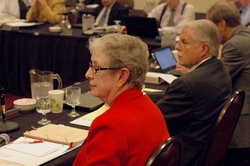
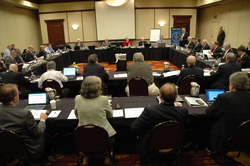
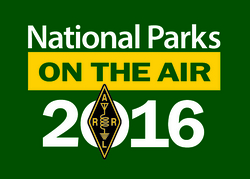 "Pileups were pretty strong all weekend long," said ARRL Media and Public Relations Manager Sean Kutzko, KX9X. "At least two units -- Weir Farm National Historic Site in Connecticut (NS76), and Little Rock Central High School National Historic Site in Arkansas (NS45) -- were activated via the SO50 FM satellite."
"Pileups were pretty strong all weekend long," said ARRL Media and Public Relations Manager Sean Kutzko, KX9X. "At least two units -- Weir Farm National Historic Site in Connecticut (NS76), and Little Rock Central High School National Historic Site in Arkansas (NS45) -- were activated via the SO50 FM satellite."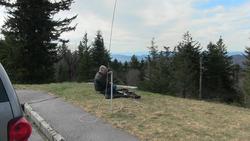
 In addition, non-consumer and residential-class ballasts are being intermixed in store displays with inadequate signage to direct consumers to the correct choice. Both letters asked the FCC to investigate and commence enforcement proceedings with respect to the two stores' marketing and retail sale of RF lighting devices in the US.
In addition, non-consumer and residential-class ballasts are being intermixed in store displays with inadequate signage to direct consumers to the correct choice. Both letters asked the FCC to investigate and commence enforcement proceedings with respect to the two stores' marketing and retail sale of RF lighting devices in the US.

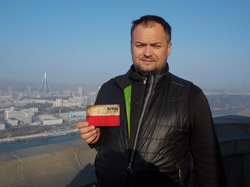
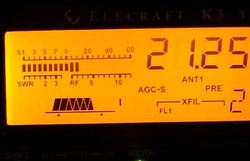
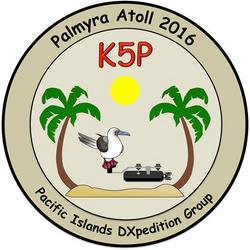 The Pacific Islands DX Group's
The Pacific Islands DX Group's .jpg) Meanwhile, the 14-member Intrepid-DX Group
Meanwhile, the 14-member Intrepid-DX Group 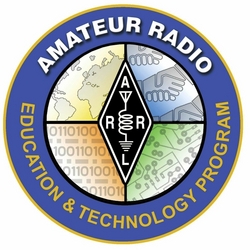 Resources awarded ranged from license manuals, foxhunting equipment, and a marine buoy, to transceivers and a complete station.
Resources awarded ranged from license manuals, foxhunting equipment, and a marine buoy, to transceivers and a complete station. "Dishtronix has been continuously operating for 17 years, is financially stable and will continue managing in a manner that promotes and maintains financial stability. My vision is strictly long term," he said. TEN-TEC production will remain in Sevierville, Tennessee.
"Dishtronix has been continuously operating for 17 years, is financially stable and will continue managing in a manner that promotes and maintains financial stability. My vision is strictly long term," he said. TEN-TEC production will remain in Sevierville, Tennessee. Dishop told ARRL that he's had to make "some tough decisions" to ensure the company's long-term viability. He confirmed a recent TEN-TEC reflector web post by former TEN-TEC Engineering Manager John Henry, KI4JPL, whom Dishop has retained on a contract basis, that indicated a new service policy is now in place, with a $140 minimum charge just to look at a radio, even if it is not repaired. This includes items already sent to RKR for repair.
Dishop told ARRL that he's had to make "some tough decisions" to ensure the company's long-term viability. He confirmed a recent TEN-TEC reflector web post by former TEN-TEC Engineering Manager John Henry, KI4JPL, whom Dishop has retained on a contract basis, that indicated a new service policy is now in place, with a $140 minimum charge just to look at a radio, even if it is not repaired. This includes items already sent to RKR for repair..jpg) "This question was designed to determine how broad the interest in a time-limited category might be," Thompson said in the survey report. "We were surprised at the high level of support for a time limit. It was even more surprising to see that the majority of support was coming from Europe. Even more interesting was that it was serious competitors who wanted this change. While older ages were more in favor, the results were fairly consistent across all."
"This question was designed to determine how broad the interest in a time-limited category might be," Thompson said in the survey report. "We were surprised at the high level of support for a time limit. It was even more surprising to see that the majority of support was coming from Europe. Even more interesting was that it was serious competitors who wanted this change. While older ages were more in favor, the results were fairly consistent across all."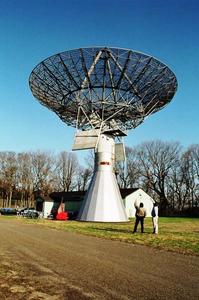
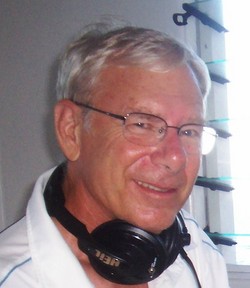

 The predicted solar flux is 100 on January 7; 105 on January 8-13; 100, 105, 110, and 115 on January 14-17; 120 on January 18-21; 115, 110, 105, and 110 on January 22-25; 115 on January 26-27; 110 on January 28, and 105 on January 29-February 3. The solar flux then peaks for the near term at 115 on February 5-6 and again at 120 on February 14-17.
The predicted solar flux is 100 on January 7; 105 on January 8-13; 100, 105, 110, and 115 on January 14-17; 120 on January 18-21; 115, 110, 105, and 110 on January 22-25; 115 on January 26-27; 110 on January 28, and 105 on January 29-February 3. The solar flux then peaks for the near term at 115 on February 5-6 and again at 120 on February 14-17.







